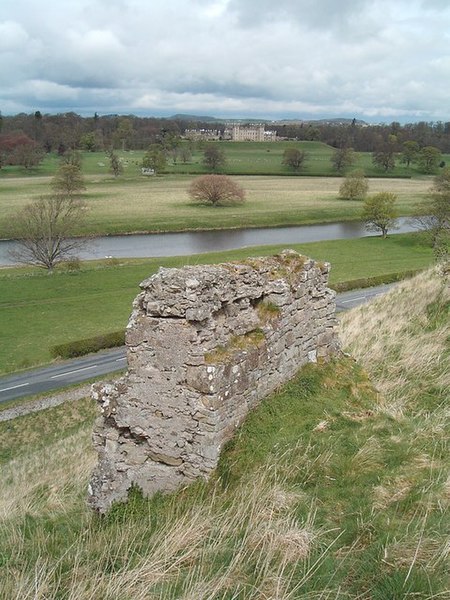Roxburgh
County towns in ScotlandFormer county towns in ScotlandFormer populated places in ScotlandParishes in RoxburghshireRoxburgh ... and 3 more
Royal burghsUse British English from July 2019Villages in the Scottish Borders

Roxburgh () is a civil parish and formerly a royal burgh, in the historic county of Roxburghshire in the Scottish Borders, Scotland. It was an important trading burgh in High Medieval to early modern Scotland. In the Middle Ages it had at least as much importance as Edinburgh, Stirling, Perth, or Berwick-upon-Tweed, for a time acting as de facto capital (as royal residence of David I).
Excerpt from the Wikipedia article Roxburgh (License: CC BY-SA 3.0, Authors, Images).Roxburgh
Roxburgh Castle,
Geographical coordinates (GPS) Address Nearby Places Show on map
Geographical coordinates (GPS)
| Latitude | Longitude |
|---|---|
| N 55.5965 ° | E -2.4562 ° |
Address
Roxburgh Castle
Roxburgh Castle
TD5 8LP
Scotland, United Kingdom
Open on Google Maps









